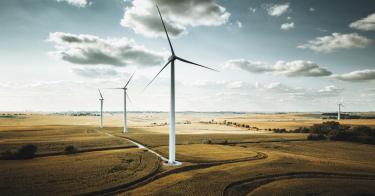Last week the lobbying arm of the wind energy industry made an unsurprising, though somewhat embarrassing, announcement. It wants a longer lifeline with federal subsidies. So much for wind being the low-cost energy source of the future.
Less than a year ago, the American Wind Energy Association had with great fanfare issued a press statement that as Bloomberg reported: “America’s wind farms are ready to go it alone.” Sen. Chuck Grassley of Iowa, a Republican who has strongly supported the wind industry since the days of federal support began in 1992, boasted that the wind industry has finally “matured” and that wind farms were “ready to compete.”
Never mind.
Big Wind’s change of heart was predictable because when this tax giveaway — which basically requires taxpayers to underwrite 30 percent of the cost of wind energy production — was first enacted, the renewable energy lobby promised that it would lift itself out of the federal wheelchair and walk on its own within five years. But like clockwork, every five years they have come back to Congress pleading for an extension — much like Oliver with his porridge bowl asking: “Please, sir, could I have some more.”
What was especially interesting was why Big Wind thinks it is deserving of “more.” The industry execs mentioned the tough competition from natural gas — which isn’t going away. Natural gas is today by far the most cost-efficient source of electric power generation in most markets. Thanks to the shale revolution natural gas prices have fallen by about two-thirds. This means that only with very generous taxpayer assistance on top of local mandates requiring local utilities to buy wind and solar power can green energy compete.
Big Wind said that it will lobby for a continued subsidy so wind power will “have parity” with the solar industry subsidies. The solar industry sun gods have even higher subsidies than wind producers get. They are actually right. Per unit of electricity, solar gets five times as much as wind power. And wind gets some five times more than coal and natural gas. So now we have a subsidy arms race going on.
Over the last 30 or so years, the renewable energy industry has received well over $100 billion in federal, state and local handouts. Yet these are still fairly trivial contributors to America’s overall energy production — supplying somewhere between 5 percent and 10 percent of the nation’s total. The rational solution would of course be to eliminate all federal energy subsidies and simply create a level playing field among coal, nuclear, natural gas, solar and wind. But given the current anti-fossil fuels hysteria and the movement to promote green energy at any cost, the idea of creating an economically-efficient market for energy is about as likely as hell freezing over — which isn’t going to happen anytime soon because of global warming.
Given the powerful green movement’s lobby on Capitol Hill, don’t be surprised if the federal aid keeps pouring in. But here again we see again the central contradiction of the green energy fad. On the one hand, we here rave reviews of how enormously cost effective green energy has become in the 21st century. We are told we can require 50 percent, 60 percent and even 100 percent renewable energy over the next decade at no cost to consumers or businesses.
If so. Why must the subsidies continue ad infinitum? If $100 billion of taxpayer handouts hasn’t worked, what will?
My hunch is that the lifelines Washington keeps tossing to the wind and solar industry have been more curse than blessing. Subsidies can be as addictive as heroin. A cold turkey cut off of taxpayer aid would force the renewable industry to adopt strategies and innovations that would make them viable competitors in energy markets.
Necessity really is the mother of invention.
This piece originally appeared in The Washington Times on 10/18/19




